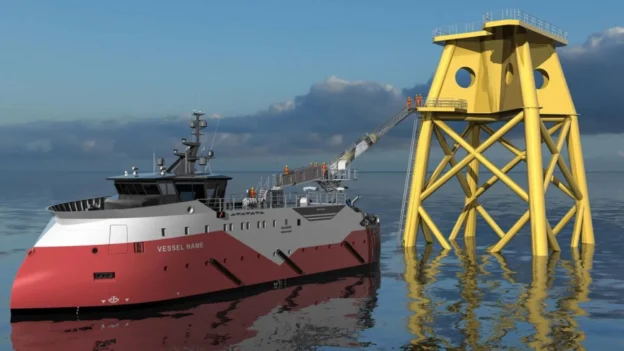The offshore logistics is undergoing a significant transformation and Ulstein is at the center of that conversation. During the Walk-to-Work conference in Rotterdam, Henrik Høidal, system architect at Ulstein Design & Solutions AS, presented the SX250: a vessel designed to redefine efficiency and sustainability in offshore wind operations.
Thinking beyond the height of the waves
In his speech, Høidal questioned the traditional approach focusing exclusively on significant wave height (Hs) as the operational parameter. He proposed a change of mindset: analyzing the ship’s movements as the true indicator of safety.
This idea generated an intense exchange of ideas among the attendees, and laid the groundwork for rethinking logistical design criteria for offshore projects. offshore projects.
Ulstein’s SX250 as an answer to a demanding market
While current offshore operations support vessels are oversized and underutilized, the SX250 is positioned as a smarter, more cost-effective option. Designed for missions with tight budgets, it can be combined with CSOV vessels to meet logistical needs without doubling the cost or environmental footprint. This strategy offers a viable alternative to reliance on large-scale vessels.
The SX250 stands out for having a 50% to 60% lower investment cost compared to a CSOV. Its fuel consumption is also 50% lower, validated by CFD analysis.
In addition, it operates with a transfer height of 10 to 25 meters and can perform effectively in conditions up to 2.4 meters Hs. This makes it an ideal platform for smaller logistics operations without sacrificing safety or performance.
Complementarity instead of replacement
One of the points highlighted by Høidal was that the SX250 is not intended to replace large-scale vessels, but to complement them. Instead of operating two large vessels, operators can opt for a combination between a CSOV and one or two SX250s, better adapting to actual demand and reducing costs significantly.
Source and photo: Ulstein

